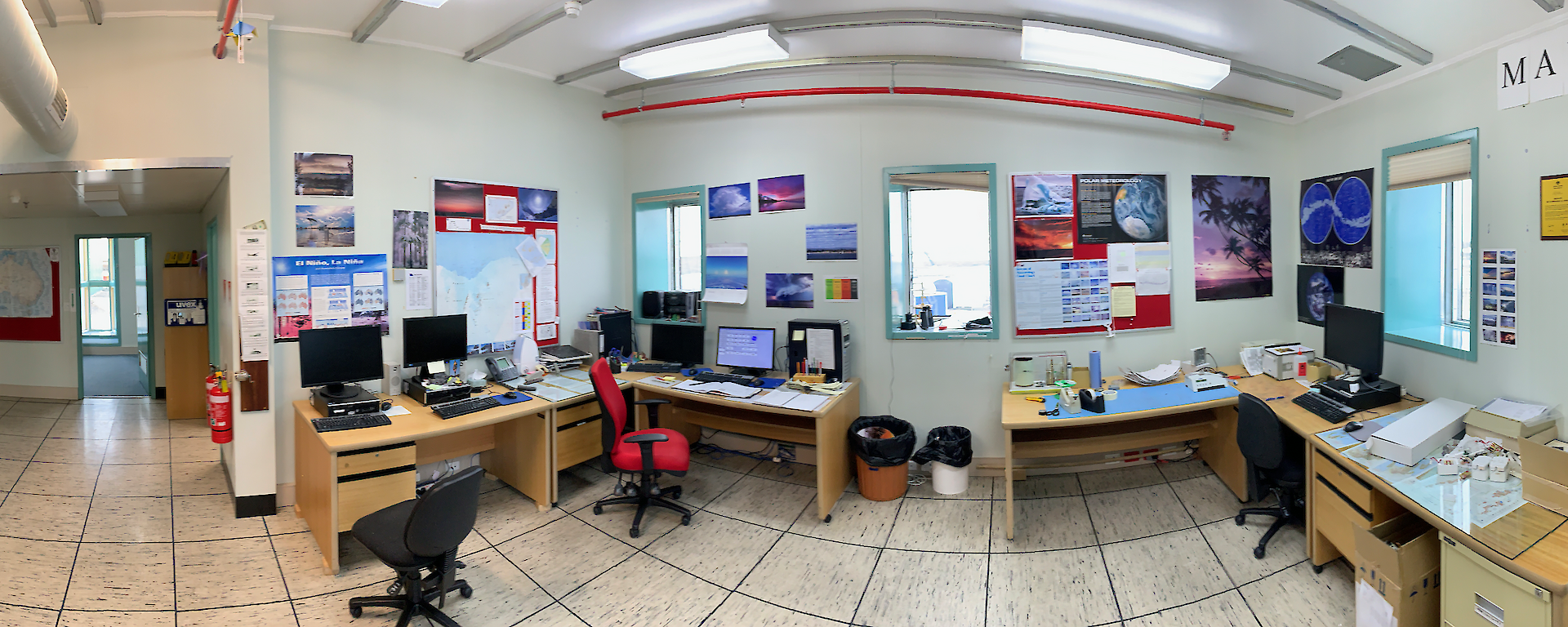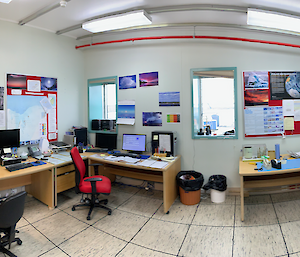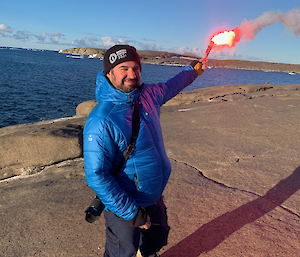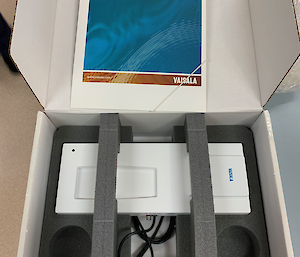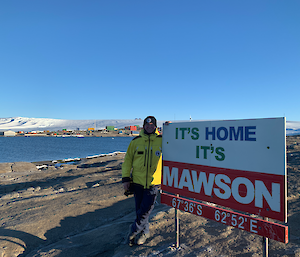The 2019 Mawson Bureau of Meteorology team of Leon and I (Roelof), enjoyed a thorough handover courtesy of the outgoing crew, and have settled into established routines. Together, we are responsible for maintaining the program of surface and upper atmospheric observations, ensuring equipment remains robust and delivers reliable and accurate data under challenging environmental conditions, and that the equipment continues to comply with internationally accepted exposure standards. We also assist with the operation of other scientific installations, including the CosRay facility (part of the Bureau’s Space Weather program), and the CSIRO’s Clean Air Laboratory.
The CosRay project is the study of cosmic rays in space, first commenced at Mawson in 1955. It has been operating almost continuously ever since. It now works autonomously and only requires minimal direct input from the wintering team. The Clean Air Lab samples and stores for later analysis environmental air collected during particular weather conditions, twice per calendar month.
During the summer, our predecessors had been very busy performing two flights per day in support of the Year of Polar Prediction (YOPP) exercise. This occurred during a period of a considerable amount of work being undertaken in the balloon facility. The work ultimately brought about the return to service of the HOGEN equipment, allowing local production and storage of hydrogen, used to inflate and launch our balloon-borne packages that record various atmospheric parameters, including temperature and humidity, air pressure, and wind direction and speed. Prior to completion of this work, balloons were being inflated using helium, a more costly alternative with less reliable ascent rates. The efforts made by the 2018 crew were invaluable to the overall project, similarly undertaken at the other Antarctic stations.
Later this month, we are expecting to changeover to a new radiosonde system using smaller, lighter consumables, meaning less gas required to inflate balloons. Unfortunately, as sometimes happens with expected deliveries to the frozen continent, one of the hardware components for this system did not arrive at resupply! We were facing the unlikely scenario where the supply of superseded radiosondes would be exhausted before month’s end without replacement, unless the missing component could be delivered by other means. The AAD and the Aurora Australis stepped in, with an operational window to despatch the vessel to Davis to secure our colleagues’ spare of the equivalent unit, and return with it to Mawson.
Upon arrival, with winds too strong and waters too rough to allow a safe IRB deployment to deliver the package, it was decided to navigate the Aurora Australis as close as possible to West Arm, and fire a line to land, along which the package could be despatched. The first attempt was unfortunately unsuccessful; simply too windy. However, a subsequent attempt was successful, following expert navigation by the Aurora Australis’ Master to bring the vessel close to land, and the skill of the crew firing the line accurately to the waiting team on land. The item was then ceremonially delivered to us, where it has now been installed. A great team effort, in the best of Antarctic traditions.
As our Station Leader has already mentioned in a previous edition, the weather itself has been a mix of rather summery days with maxima reaching a balmy 5°C, to far cooler days with not just gale force winds, but storm and hurricane force winds, and blizzard conditions. Indeed, on the 16th of February, Mawson equalled its record highest February wind gust of 194km/h during the early morning. Blizzard conditions prevailed for many hours, and movement around the station was challenging, but always safely undertaken in teams and only when necessary.
Balloon launches in windy conditions such as these can be problematic, and a few touch-and-go successes have already been realised, including one that saw the radiosonde bounce twice on the ground and then fractionally miss the fuel farm before heading up over Horseshoe Harbour and away from the strong surface winds. Much to my surprise, the hardy little radiosonde survived the ordeal and performed perfectly throughout the remainder of the flight! There is a bit of a trick to successfully launching balloons in these conditions, but an understanding of how the wind moves around the balloon building helps significantly. After that, it’s simply experience.
We now await the shortening of the days, which themselves will become progressively cooler. However, the tasks of the weather folk of the Bureau of Meteorology continue in all conditions, and we look forward to the challenges of the coming winter. Check our local weather conditions, updated every half hour, on the Bureau’s website.
Roelof (Senior Observer)

